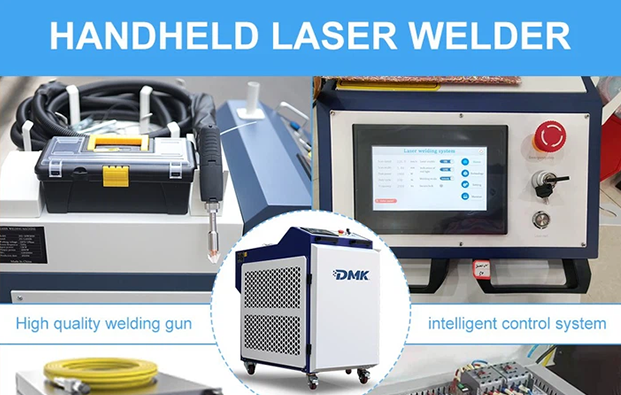Laser welding, a welding process that leverages radiant energy for thermal input, has emerged as a game-changer in achieving high-precision and high-efficiency joins-offering distinct advantages that position it at the forefront of advanced manufactu...
Contact Us
Laser welding, a welding process that leverages radiant energy for thermal input, has emerged as a game-changer in achieving high-precision and high-efficiency joins-offering distinct advantages that position it at the forefront of advanced manufacturing. Based on its molten pool formation mechanism, the technology is primarily classified into two core types: conduction-mode laser welding and deep penetration laser welding. The fundamental distinction between the two lies in the state of the molten pool: the former maintains a closed molten pool surface, while the latter sees the molten pool penetrated by the laser beam to form a keyhole.

Conduction-mode laser welding operates at a typical power density of less than 10⁵ W/cm², defined by its shallow melting depth and small depth-to-width ratio-traits that make it ideal for applications requiring gentle, controlled heating.
Its working principle hinges on thermal conduction: upon absorbing the laser beam's energy, the workpiece transfers heat inward through conduction. By fine-tuning parameters such as pulsed laser width and energy, localized or full melting of the workpiece is achieved, creating a defined molten zone. As the laser beam moves along the welding path, this molten zone cools and solidifies gradually, forming a stable weld seam.
Thanks to its compatibility with a wide range of materials and exceptional molten pool stability, conduction-mode laser welding has become a staple in key industries including electronics manufacturing, automotive production, and general mechanical engineering-supporting critical processes from micro-component joins to large-scale structural assembly.
In contrast, deep penetration laser welding demands a power density of over 10⁶ W/cm². Its defining feature is the use of a high-power laser beam that heats, melts, and vaporizes the workpiece surface; under intense vapor pressure, a narrow "keyhole" is formed, enabling deep, focused melting. This translates to two critical advantages: ultra-fast welding speeds and a large depth-to-width ratio-making it indispensable for thick-section or high-throughput manufacturing.
When laser power output reaches 10⁶–10⁷ W/cm², the energy generated far exceeds the heat lost via conduction, convection, and radiation from the workpiece. This triggers rapid vaporization of the metal surface, forming the keyhole, while a liquid molten zone forms around its perimeter. As the laser head moves steadily along the welding direction, the molten metal fills the keyhole and solidifies, forging a strong, durable weld seam between the base materials-capable of withstanding extreme mechanical or thermal stress.
Beyond welding, these two laser mechanisms-surface melting and perforation-serve as foundational technologies across broader laser processing fields, each tailored to unique industrial needs.
Surface melting: Under laser exposure, the material surface is locally heated and melted to form a closed molten pool. The process balances "smoothing" and "fusion" of the surface, requiring precise control of laser power, scanning speed, and focal length to ensure accuracy. Its primary applications include metal coating (for corrosion or wear resistance), material repair (e.g., fixing surface defects in aerospace components), and custom part manufacturing.
Perforation: The laser beam penetrates the material surface, creating one or more holes that allow direct energy transfer to the material's interior. Since the laser's focal point shifts continuously during processing, parameters like beam position, power, and scanning speed must be tightly regulated. This technology is widely used in microfabrication (e.g., creating tiny pores in medical devices), biomedicine (precision tissue ablation), and sensor manufacturing (drilling micro-holes for signal transmission).
As laser technology evolves, the boundaries of what's possible continue to expand. Industry leaders and researchers are developing novel processing methods to unlock greater complexity and efficiency: modifying laser beam shape or polarization to enhance precision, adopting multi-beam systems for simultaneous multi-zone processing, or integrating multi-jet structures to improve heat distribution. These innovations promise to address unmet needs-from ultra-fine microfabrication to large-scale additive manufacturing-further solidifying laser processing's role as a cornerstone of smart, sustainable manufacturing.
At its core, laser welding is a process of transformation: metal workpieces absorb the laser's high energy, melt, and solidify into stable weld seams. Its unrivaled combination of precision, efficiency, and versatility has made it irreplaceable in modern manufacturing-driving progress in automotive lightweighting, aerospace innovation, electronics miniaturization, and beyond. As demand for faster, more sustainable, and higher-performance manufacturing grows, laser welding and its derivative technologies are set to play an even more pivotal role in shaping the future of industry.